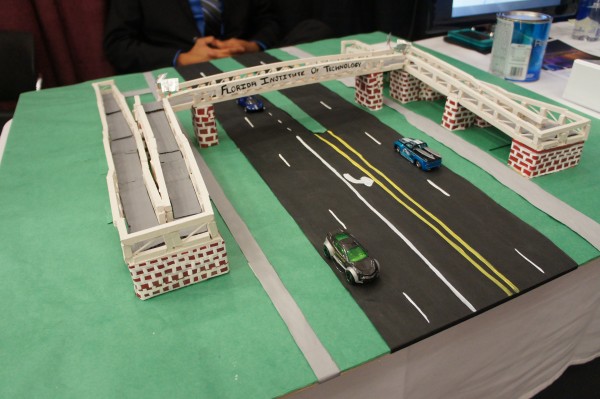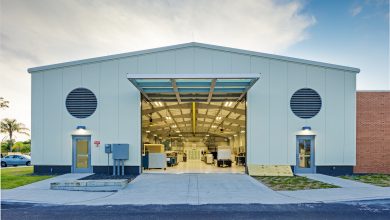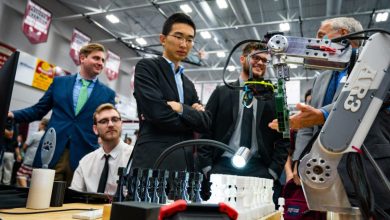Civil engineering majors bridge the gap for pedestrians
The issue of pedestrian road safety is a growing concern for expanding campuses around the nation. A team of Florida Tech civil engineering majors believe they have designed a long-term solution, not only for Florida Tech, but other communities facing similar infrastructure challenges.
Each year during their senior year, civil engineering majors are tasked with providing a design solution to a specific problem presented by their department. This year, the Civil Engineering Department challenged students to design a structure that allows pedestrians to cross the campus-adjacent intersection of Babcock St. and University Blvd.
Lexi Miller and her fellow civil engineering majors had the winning design at this year’s Northrop Grumman Engineering and Science Student Design Showcase. Their design most efficiently allows pedestrians to walk above the intersection, providing unhindered access to either side.

The Motive
“I guess what inspired us to really want to create a quality product/report was that the fact that something like this can actually happen and impact the community in a positive way,” says Lexi. “We thought ‘how cool would it be if something like this happened and we had a design that was thorough and well-done and the actual bridge was based off of what we did?’”
Miller’s team believes that a bridge would be the best way to allow pedestrians to easily cross the intersection and would eliminate driver and pedestrian interactions. “Our prediction is that most pedestrians would want to use it versus waiting for a light and using the thoroughfare,” says Lexi.
An undertaking of this scale however, does not come without its challenges and setbacks, and the team underwent a learning curve that heightened their skills and gave them experience dealing with unique circumstances.
Project-based learning provides real-world experience
Lexi attests that time was definitely the group’s most prominent challenge. “Everything took a while,” she says. “Creating an entire design schedule was one of our first tasks for the design process, which is a lengthy process”
Despite their opportunity to apply principles they had already mastered, a fair amount of the process involved the team learning things as they went along. This prompted a great deal of critical thinking that worked well towards the realization of their goals.
“Analyzing data, calculating loads, etc. was stuff we learned in class but we had never tackled all of the other details,” says Lexi. “What codes did we need? What about permits? How would they be filed? How do we tie it back into the community? How can we make it as sustainable as possible? Things would pop up left and right; little details.”
As with any learning experience, the team was able to discern steps they could have approached differently and things they could probably do more efficiently, given then the chance. Lexi reflects that the first of such alterations would be starting the more important tasks earlier.
“We ran into some obstacles that we didn’t think about, going into it,” she says. “Having a bit more time to figure them out and work through or around them would have been beneficial.”
Lessons Learned by Civil Engineering Major
“Our senior design project taught me how to work in a group and to trust my team,” says Lexi. Her advice to future civil engineering majors is to prepare early. “Trust in yourself and what you’re talking about,” she counsels. “Have confidence, work hard, and be open to learning as you go.”





